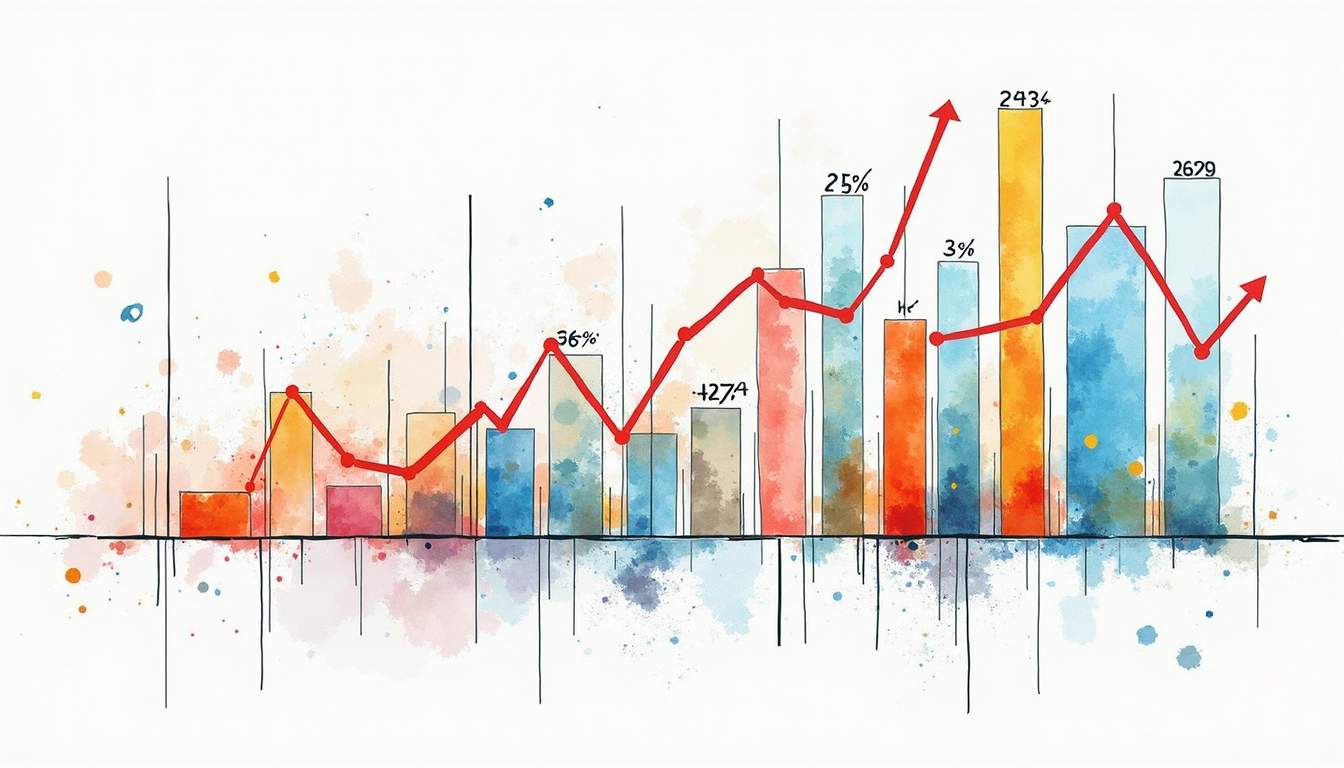In today’s competitive market, businesses are constantly seeking effective strategies to retain customers and enhance their experience. One of the key components in achieving this goal is the thorough analysis of sales data. The insights derived from such analyses can lead to more informed decision-making, improved sales strategies, and ultimately, increased customer retention.
Sales data analysis provides a treasure trove of information about customer behaviors, preferences, and purchasing patterns. By leveraging this data, companies can tailor their marketing efforts, optimize their inventory levels, and personalize customer interactions. Understanding the nuances of this data can truly transform a business’s approach to customer management and retention.
“`html
Understanding the Importance of Sales Data Analysis
At the heart of successful customer retention strategies lies a deep understanding of sales data. This information serves as a reflection of consumer engagements and can reveal what strategies are working and where there’s room for improvement. Analyzing sales data is not merely about counting figures but rather interpreting what those numbers say about customer loyalty and potential churn.

The importance of sales data becomes apparent when considering how it can highlight the most and least effective aspects of a business’s sales strategy. For instance, identifying trends in product preferences can help businesses refine their offerings. Similarly, detecting patterns in shopping cart abandonment or frequent return items can guide enhancements in customer service or product delivery mechanisms.
Moreover, sales data analysis helps businesses identify and understand their most valuable customers. By doing so, companies can focus their efforts on cultivating these relationships, tailoring promotional activities, and developing a more personalized shopping experience. The significance of these insights cannot be overstated, as they directly impact the bottom line and long-term success of any enterprise.
Leveraging Customer Insights for Personalization
Personalization is a powerful tool in the realm of customer retention, and sales data serves as the foundation for crafting tailored experiences. By delving into sales data, businesses can segment their customer base into distinct groups based on purchasing behavior, preferences, and other demographic factors. This segmentation allows for more targeted marketing efforts, ensuring that customers receive offers and product recommendations that resonate with their unique needs.
For example, a retail company may discover through data analysis that a particular demographic consistently purchases eco-friendly products. Equipped with this insight, the company can create tailored marketing campaigns that focus on sustainability, appealing directly to that valuable customer segment and increasing the likelihood of repeat purchases.
Furthermore, leveraging customer insights also extends to understanding the timing of purchases. Analyzing when customers are most likely to shop can help businesses optimize their marketing efforts. For instance, if data shows that a significant number of purchases occur during weekends or holidays, companies can ramp up their promotional activities during these peak times, ensuring they capture the attention of consumers when they are most inclined to buy.
Identifying Trends and Predicting Future Sales
One of the most beneficial aspects of sales data analysis is the ability to identify emerging trends and predict future sales. By examining historical sales data, businesses can uncover seasonal patterns, peak shopping periods, and emerging product trends. This foresight enables companies to proactively prepare for fluctuations in demand, ensuring that they can meet customer needs without overstocking or understocking inventory.
Additionally, predictive analytics tools are becoming increasingly sophisticated, allowing businesses to leverage past sales data to forecast future trends. These predictions can inform product development, marketing strategies, and inventory management, equipping businesses with the knowledge needed to stay competitive in a rapidly changing marketplace.
Moreover, understanding these trends can also facilitate better supplier relationships. With accurate sales forecasts, businesses can communicate more effectively with suppliers about their needs, ensuring that they have the right amount of stock on hand. This not only streamlines operations but also enhances the overall customer experience by reducing wait times and ensuring product availability, which is crucial in maintaining customer satisfaction and loyalty.
“`
Implementing Effective Sales Data Analysis Strategies
To fully harness the power of sales data, businesses must implement effective analysis strategies. This often begins with selecting the right tools and technologies to collect and analyze data efficiently. There are numerous software solutions available that can compile sales data from various sources, offering a cohesive view of customer interactions and sales performance. These tools not only streamline data collection but also provide advanced analytics capabilities, enabling businesses to visualize trends and patterns that may not be immediately apparent. For instance, predictive analytics can forecast future sales based on historical data, allowing companies to make proactive decisions rather than reactive ones.

Furthermore, businesses should focus on setting clear goals for their data analysis efforts. By defining what they hope to achieve, whether it’s reducing churn, increasing average order value, or improving customer satisfaction, they can tailor their analysis to provide actionable insights that align with these objectives. Clear objectives guide the analytical process, ensuring that businesses extract relevant information that drives meaningful changes. Additionally, involving cross-functional teams in the goal-setting process can enhance the depth of insights gathered, as different departments may have unique perspectives on customer behavior and sales dynamics.
Integrating Data Across Platforms
In today’s digital ecosystem, customer data is often fragmented across multiple platforms and systems. The key to comprehensive sales data analysis lies in integrating these disparate data sources into a cohesive framework. By doing so, businesses can gain a holistic view of customer interactions, spanning across online and offline channels. This integration not only enhances the accuracy of data but also allows for more nuanced analyses, such as understanding how social media campaigns influence in-store purchases or how email marketing impacts online sales.
This integration might involve connecting CRM systems with e-commerce platforms, POS systems, and social media analytics. The resulting unified data set provides a 360-degree view of the customer journey, revealing opportunities for improvement that might have been overlooked if these data streams remained siloed. Moreover, leveraging APIs and data connectors can facilitate this integration, ensuring that data flows seamlessly between systems. As a result, businesses can respond more quickly to market changes and customer needs, ultimately leading to a more agile and responsive sales strategy.
Continuously Monitoring and Improving
Sales data analysis is not a one-time task but an ongoing process. The business landscape is dynamic, with consumer preferences and market conditions constantly evolving. To maintain a competitive edge, businesses must continuously monitor their sales data, adjusting their strategies as new insights emerge. This requires not only a robust analytics framework but also a commitment to fostering a culture of experimentation, where teams are encouraged to test new approaches and learn from both successes and failures.
Regularly reviewing sales performance metrics, customer feedback, and industry trends enables companies to stay ahead of the curve. By fostering a culture of data-driven decision-making, businesses can ensure that their customer retention strategies remain relevant and effective, ultimately enhancing customer satisfaction and loyalty in the long term. Furthermore, incorporating machine learning algorithms can automate parts of this monitoring process, allowing businesses to identify anomalies or shifts in customer behavior in real-time. This proactive approach ensures that companies are not just reacting to changes but are anticipating them, positioning themselves as leaders in their respective markets.
“`html
Take Your Hotel’s Customer Retention to New Heights with Prosper Hotels
Understanding and leveraging sales data is just the beginning of your journey to enhanced customer retention. At Prosper Hotels, we specialize in elevating your hotel’s performance by providing expert revenue management, innovative digital marketing, and streamlined group housing services. Our dedicated team is ready to help you apply these insights to drive revenue growth and ensure the satisfaction and success of both your guests and staff. Learn More about how we can assist your hotel in achieving its full potential.
“`


 Drive More Hotel Revenue
Through Untapped Strategies
Drive More Hotel Revenue
Through Untapped Strategies
